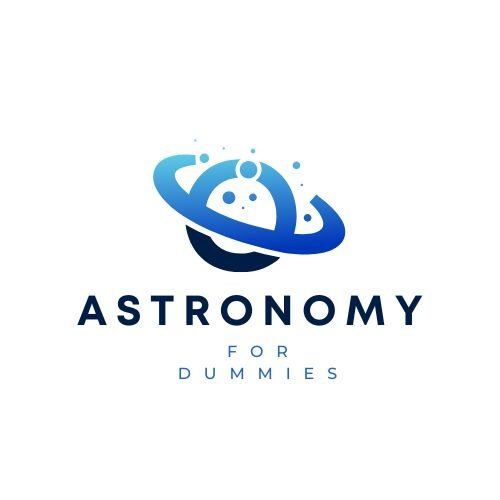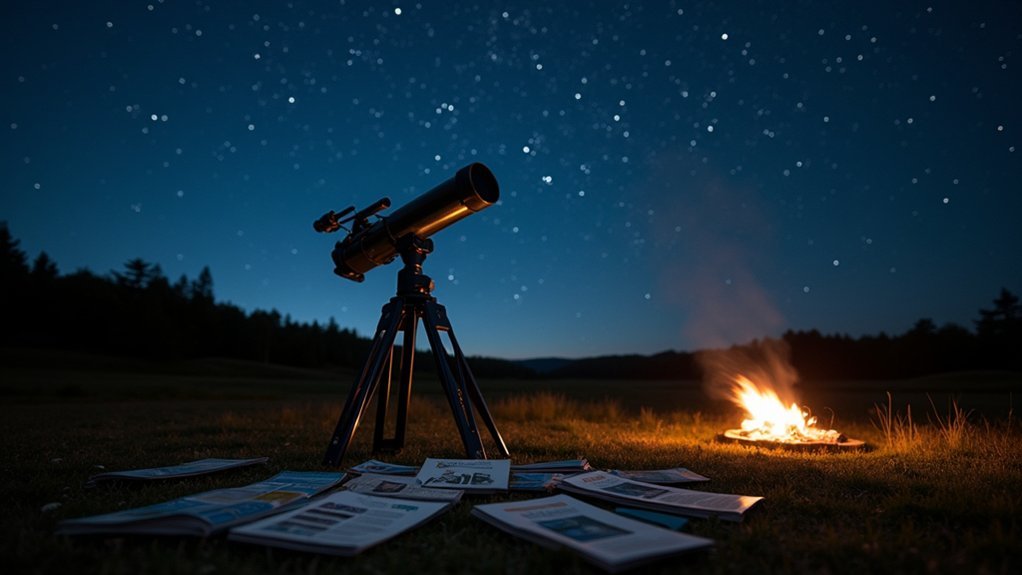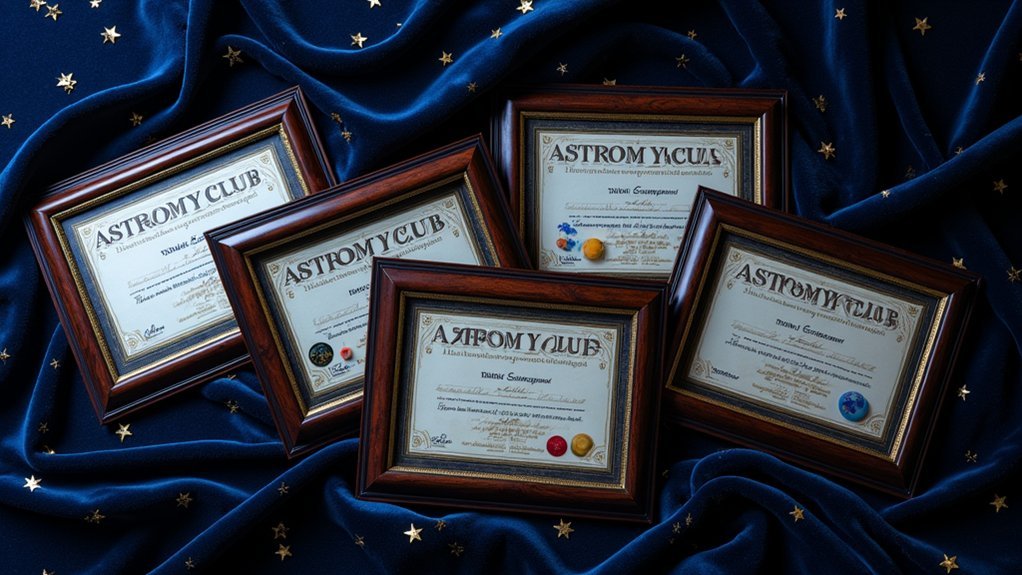If you're stepping into the world of astronomy, you'll quickly discover that your telescope is only as good as its eyepieces. With 2025's latest offerings, you don't have to break the bank to view celestial wonders in stunning detail. Whether you're tracking Jupiter's moons or exploring the Andromeda galaxy, the right eyepiece set can transform your stargazing experience from frustrating to fascinating. Let's explore the top seven kits that'll give you the clearest view of the cosmos.
Celestron 14 Piece Telescope Accessory Kit
Beginner astronomers will find their cosmic journey simplified with the Celestron 14 Piece Telescope Accessory Kit, an extensive starter set that transforms basic telescope viewing into a dynamic observational experience.
You'll get five Plössl eyepieces (32mm to 6mm) with a 52-degree field of view and a 2x Barlow lens, offering ten magnification options. The kit includes six colored filters to enhance planetary details and a moon filter for lunar observations. Everything fits neatly in a durable aluminum case with custom foam inserts.
With a 2-year warranty and US-based expert support, you're backed by Celestron's reputation as a trusted telescope manufacturer since 1960.
Best For: Amateur astronomers and beginners looking to expand their telescope's capabilities with a comprehensive set of quality eyepieces and filters in one organized package.
Pros:
- Complete accessory kit with 5 eyepieces and 2x Barlow lens providing 10 different magnification options
- Includes specialized filters for enhanced planetary and lunar observation
- Sturdy aluminum carrying case with custom foam interior protects and organizes equipment
Cons:
- Only compatible with telescopes that have 1.25" focusers
- May be overwhelming for absolute beginners who are just learning basic telescope operation
- Higher price point compared to buying individual basic accessories
Astronomical Telescope Accessory Kit with Eyepieces, Filters & Barlow Lens
This extensive accessory kit offers three essential components that make it ideal for amateur astronomers ready to expand their viewing capabilities. You'll get three Plossl eyepieces (6mm, 12.5mm, 20mm) for varying magnifications, a 2X Barlow lens that doubles your magnification options, and four filters to enhance your celestial observations.
The kit's Moon filter reduces glare while the Red, Blue, and Yellow filters help you spot details on planets like Mars, Jupiter, and Saturn. With a 4.5-star rating from 140 reviews, you'll appreciate the portable aluminum carry case that keeps your accessories secure during transport.
Best For: Amateur astronomers looking to enhance their telescope's viewing capabilities with a comprehensive set of eyepieces, filters, and magnification options for observing planets, the Moon, and deep-sky objects.
Pros:
- Complete kit with three Plossl eyepieces, Barlow lens, and four filters provides versatile viewing options
- Sturdy aluminum carry case ensures safe storage and transportation of accessories
- High customer satisfaction with 4.5/5 stars from 140 reviews indicates reliable quality
Cons:
- May require additional adapters for compatibility with older telescopes
- Limited magnification range compared to more extensive professional kits
- Basic filter set may not satisfy advanced astrophotographers seeking specialized filters
Acxico Universal Telescope Eyepiece Set (3-Piece)
With three versatile focal lengths ranging from 20mm to 4mm, the Acxico Universal Telescope Eyepiece Set equips novice astronomers with essential magnification options for exploring celestial objects. The multi-coated glass eyepieces fit standard 0.965-inch telescope ports and deliver a 35-degree field of view for observing nebulae, planets, and deep sky objects.
You'll start with the H20mm eyepiece for the widest view, then switch to H12.5mm for increased detail, and finally use the SR4mm for maximum magnification of specific targets. This well-rated set ranks #12 in its category and comes with manufacturer support if you need assistance.
Best For: Beginner astronomers and telescope enthusiasts looking for an affordable, basic eyepiece set to start exploring celestial objects with varying magnification levels.
Pros:
- Complete starter set with three different focal lengths for versatile viewing options
- Multi-coated glass optics enhance image clarity and brightness
- Universal 0.965-inch fitting works with most standard telescopes
Cons:
- 0.965-inch size is less common than 1.25-inch standard, limiting future upgrades
- Relatively narrow 35-degree field of view compared to premium eyepieces
- SR4mm eyepiece may produce dark images due to high magnification
Multi-Coated Telescope Eyepiece Set (4mm, 10mm, 20mm)
Professional-grade versatility meets user-friendly design in the Multi-Coated Telescope Eyepiece Set, making it an ideal choice for stargazers who want to grow their skills without replacing equipment.
You'll appreciate the set's three focal lengths (4mm, 10mm, 20mm), which let you observe everything from detailed lunar features to distant star clusters. The multi-coated lenses deliver sharp, high-contrast images with minimal chromatic aberration. At 1.25 inches in diameter, these eyepieces fit most telescopes, including both reflectors and refractors. The soft eyecups guarantee comfortable viewing during long observation sessions. With a 4.4-star rating and #6 bestseller ranking, you're getting reliable performance at a beginner-friendly price point.
Best For: Amateur astronomers and beginners seeking a versatile eyepiece set that offers multiple magnification options for observing various celestial objects while maintaining good optical quality.
Pros:
- Complete set with three popular focal lengths for different viewing scenarios
- Multi-coated optics provide sharp, high-contrast images with good color correction
- Universal 1.25-inch diameter ensures compatibility with most telescope types
Cons:
- Some users report edge distortion at certain focal lengths
- 4mm eyepiece may be challenging for beginners to use effectively
- May not meet the highest standards demanded by advanced astronomers
13 Piece Telescope Accessory Kit with Eyepieces and Filters
Astronomy enthusiasts seeking an all-encompassing starter kit will find excellent value in the 13-piece telescope accessory collection. You'll get five high-quality Plossl eyepieces ranging from 40mm to 6mm, perfect for viewing everything from planets to deep-sky objects.
The kit's versatility shines with its 2X Barlow lens and seven specialized filters. You'll be able to enhance planetary details with the color filters, reduce lunar glare with the moon filter, and improve cloud structure visibility with the polarizing filter. The durable metal carrying case keeps everything organized and protected. With a 4.8-star rating, this all-encompassing kit offers outstanding value compared to purchasing components separately.
Best For: Amateur astronomers and beginners looking for a comprehensive telescope accessory kit that provides versatile viewing options without breaking the bank.
Pros:
- Complete package with high-quality Plossl eyepieces offering multiple magnification options
- Includes versatile filter set for enhanced planetary, lunar, and deep-sky viewing
- Excellent value compared to purchasing components individually, with durable storage case included
Cons:
- Individual components may not match the quality of premium standalone accessories
- Some users may not need all included filters and eyepieces
- Storage case may be bulky for those with limited storage space
Astromania Telescope Accessory Kit for Beginner Telescopes
Beginner astronomers will find excellent value in the Astromania Telescope Accessory Kit, which combines essential viewing tools in one convenient package. You'll get fully-coated Kellner and Plössl eyepieces (15mm and 6mm), plus a 2x Power Lens that doubles your magnification capabilities.
The kit's planetary filters enhance your views of Jupiter, Saturn, Mars, and Venus, while the Moon filter lets you observe lunar details during bright phases. The included carrying case with die-cut foam keeps your accessories protected. At 15.7 ounces, it's lightweight and portable. With a 4.2-star rating from users, it's proven reliable for novice stargazers.
Best For: Beginning astronomers and amateur stargazers looking for a comprehensive starter kit with essential eyepieces and filters for enhanced planetary and lunar viewing.
Pros:
- Complete package with quality eyepieces, filters, and 2x Power Lens for versatile viewing options
- Protective carrying case with die-cut foam interior keeps accessories safe during transport
- Includes specialized filters for both planetary and lunar observation
Cons:
- Some quality control issues reported with occasional damaged components
- Limited eyepiece selection compared to more advanced kits
- 2x Power Lens requires additional purchase of t-ring for camera attachment
Celestron PowerSeeker Telescope Accessory Kit with Eyepieces and Filters
The Celestron PowerSeeker Telescope Accessory Kit serves as an ideal starting point for aspiring stargazers, packing essential viewing tools into one convenient package. You'll get two Kellner eyepieces (15mm and 9mm), three color filters, and a 2x Barlow lens that'll double your magnification options.
The kit's standout features include a Moon filter to reduce lunar glare, plus red and blue filters to enhance planetary viewing. While the optics aren't professional-grade, they're more than adequate for beginners. With a 4.6-star rating from nearly 5,000 users and Celestron's 2-year warranty, you're getting reliable quality at an entry-level price point.
Best For: Beginner astronomers and casual stargazers looking to expand their viewing capabilities with an affordable, comprehensive set of basic telescope accessories.
Pros:
- Complete starter kit with essential eyepieces and filters in a protective carrying case
- Versatile 2x Barlow lens effectively doubles the magnification options of included eyepieces
- Strong value proposition backed by positive user reviews and 2-year warranty
Cons:
- Optical quality is basic and may not satisfy more experienced observers
- Moon filter can produce an unwanted greenish tint
- Some users report blurriness issues at higher magnifications
Factors to Consider When Choosing Telescope Eyepiece Sets for Beginners
When you're selecting your first telescope eyepiece set, you'll need to take into account several critical factors that affect your viewing experience, including the range of magnifications available and the build quality of the eyepieces themselves. You'll want to make sure the set includes both low and high-power options with compatible filters for viewing different celestial objects clearly, from planets to deep-sky targets. The eyepieces should also come with proper storage solutions to protect your investment and, most importantly, they must be compatible with your specific telescope's design and mounting system.
Magnification Range and Power
Understanding magnification range and power serves as an essential first step in selecting telescope eyepiece sets that'll meet your observational needs. You'll want to choose eyepieces that offer both low and high magnifications, typically ranging from 20mm or higher down to 6mm or lower.
For planet and Moon viewing, you'll find that 6mm to 12mm eyepieces provide ideal magnification. When observing star clusters and deep-sky objects, opt for lower magnifications using 20mm+ eyepieces. Adding a Barlow lens to your set effectively doubles your magnification options without buying additional eyepieces.
Remember to take into account your telescope's specifications – don't exceed 50x magnification per inch of aperture. This guarantees you'll maintain image quality while maximizing your viewing experience across different celestial objects.
Filter Types and Uses
Since filters greatly enhance your viewing experience, selecting the right ones for your eyepiece set can make a dramatic difference in observing celestial objects. You'll want to start with a moon filter, which reduces glare and makes lunar details more comfortable to view during extended sessions.
For planetary observation, colored filters are essential tools. Red, blue, and yellow filters help you see surface details more clearly by improving contrast on Mars, Jupiter, and Saturn. If you're interested in studying planetary atmospheres, polarizing filters will help you observe cloud structures that might otherwise be invisible.
Consider getting a basic filter set that includes both neutral density and colored options. This combination will let you explore various celestial objects while protecting your eyes from excessive brightness.
Eyepiece Build Quality
The build quality of your telescope eyepieces directly impacts both your viewing experience and the longevity of your investment. When evaluating eyepiece construction, you'll want to look for multi-coated lenses that maximize light transmission while reducing unwanted glare. High-grade optical glass is essential, as it minimizes chromatic aberration and distortion, delivering crisp views of celestial objects.
Choose eyepieces with metal housings over plastic ones, as they'll provide better protection against accidental drops and general wear. You'll also benefit from features like wider fields of view, which let you see more of the night sky at once. Don't overlook comfort features such as soft eyecups and ergonomic designs – they're vital when you're spending hours observing, helping prevent eye fatigue and enhancing your overall stargazing experience.
Storage and Protection Options
Proper storage and protection solutions play an essential role when selecting your first telescope eyepiece set. You'll want to look for sets that come with durable carrying cases made of hard plastic or aluminum, as these provide vital protection during transport and prevent costly damage to your investment.
A high-quality foam-lined interior should hold your eyepieces and filters securely in place, eliminating the risk of impact damage when you're moving your equipment. It's also worth considering sets that offer extra storage space in their cases for additional accessories you might acquire later. A well-organized storage system isn't just about protection – it'll help you quickly locate and swap eyepieces during observation sessions. When your eyepieces are properly stored, you'll extend their lifespan and maintain their optical performance.
Compatibility With Telescope Types
When choosing your first eyepiece set, understanding compatibility with your telescope's specifications becomes vital for successful stargazing. You'll need to match your telescope's focuser size, typically 1.25-inch or 0.965-inch, with compatible eyepieces to guarantee proper fitting.
Different telescope designs require specific considerations. If you've got a reflector or refractor, you'll want eyepieces that optimize performance for your particular setup. Multi-coated lenses are essential as they improve light transmission and reduce chromatic aberration across all telescope types.
Select eyepieces with focal lengths that align with your viewing interests. For planetary observation, you'll need different magnifications than for deep-sky objects. A thorough set should include various focal lengths and a Barlow lens, giving you flexibility in magnification options.
Budget and Value Assessment
Smart budgeting for telescope eyepiece sets requires balancing cost against essential features that maximize your stargazing experience. You'll want to compare the number of eyepieces and accessories included in different kits, as some offer more extensive packages without a significant price increase.
When evaluating value, focus on sets that provide diverse focal lengths and multi-coated optics. These features guarantee you'll get better image clarity and the flexibility to observe various celestial objects without buying additional pieces. Don't forget to check customer ratings and reviews to gauge real-world performance and satisfaction levels. Also, consider the warranty coverage and available customer support – a strong backing from the manufacturer can protect your investment and provide assistance when you need it. This support adds significant value to your purchase.
Frequently Asked Questions
How Do I Properly Clean and Maintain Telescope Eyepieces?
You'll need to gently clean lenses with a soft brush and lens-cleaning solution. Don't touch glass directly – use lens tissue. Store eyepieces in dust-free cases and keep caps on when not in use.
Can I Use Eyepieces From Different Manufacturers With My Telescope?
Yes, you can use eyepieces from different manufacturers as long as they match your telescope's barrel size (typically 1.25" or 2"). Just confirm they're compatible with your focuser's specifications before purchasing.
What Is the Average Lifespan of a Telescope Eyepiece?
With proper care, your telescope eyepieces can last decades. You'll find they're incredibly durable, and as long as you keep them clean and protected from drops or scratches, they'll serve you reliably for 20+ years.
Should Beginners Start With Wide-Field or High-Magnification Eyepieces?
You'll want to start with wide-field eyepieces (25-32mm) as they're easier to use and help you locate objects. They provide a larger viewing area and brighter images, making your first stargazing experiences more enjoyable.
How Do I Prevent Eyepiece Fogging During Cold Weather Observations?
You'll prevent eyepiece fogging by letting your equipment adjust to outdoor temperatures for 30 minutes before use. Keep a lens cloth handy, and consider using dew heaters or anti-fog solutions on your eyepieces.
In Summary
You'll find these seven telescope eyepiece sets offer everything you need to start your astronomical journey in 2025. Whether you choose the all-inclusive Celestron 14 Piece Kit or the budget-friendly Acxico Set, you're getting quality optics and essential accessories. Remember to take into account your telescope's compatibility, your viewing preferences, and your budget when selecting the perfect eyepiece set for your stargazing adventures.





Leave a Reply